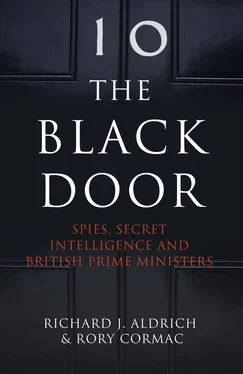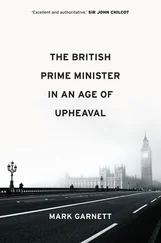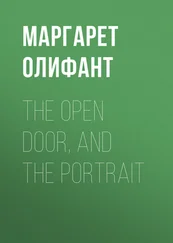Wilson’s public ramblings on intelligence required a new approach by Downing Street. Since the early 1960s, prime ministers had been forced to confront a new era of exposure. Now, a decade later, they had begun to manage their own gentle counter-offensive. Encouraged by the cabinet secretary, Burke Trend, with whom Wilson had enjoyed a good relationship, the intelligence agencies initiated a deliberate policy of emerging from the shadows. The Cabinet Office presided over the writing of the official history of wartime intelligence, and approved the release of the papers of Bletchley Park. This project was expressly about intelligence at the top, and traced the interaction between secrets and high strategy. Throughout the 1970s, British prime ministers were feeling their way towards a more public profile for the security agencies and their own engagement with them, pondering the possibility of public avowal of their existence and activities.
Margaret Thatcher hated this. Even as opposition leader in the late 1970s, she had repeatedly attempted to veto any public revelations about intelligence, however carefully controlled. Once she entered Downing Street, she was immediately confronted by the media frenzy surrounding the revelation that Anthony Blunt, Surveyor of the Queen’s Pictures, was the ‘Fourth Man’. Tasked with explaining the decision not to prosecute him, she went against her instincts and, rather than saying as little as possible, made a detailed statement to the House of Commons. She soon regretted it. Each morsel of detail was picked over, and seemed to draw out further press revelations. Now confirmed in her personal commitment to absolute secrecy, Thatcher’s later years were partially defined by the absurd battle with MI5’s supreme mole-hunter Peter Wright, whose Spycatcher memoir she sought to suppress. Her cabinet secretary endured public humiliation in the Australian courts in a futile attempt to hide what was already in the public domain.
By contrast, John Major found himself surrounded by modernisers. Not only were the intelligence chiefs of the 1990s happy to adopt an avowed legal identity, they were also keen to emerge from the shadows. In 1994 the new director-general of MI5, Stella Rimington, gave the BBC Dimbleby Lecture on ‘Security and Democracy’ – despite the intense unease of Home Office officials. MI6 opened an extraordinary new building at Vauxhall Cross, on the south bank of the Thames, that looked like something out of science fiction. Not to be outdone, GCHQ then commissioned its own new headquarters that looked like a flying saucer, and became the first British agency to have a presence on the internet. Yet the press still seemed determined to turn success into scandal. In 1999, when MI6 revealed the treasures of the Mitrokhin archive, compiled by a KGB archivist who had given his secrets to Britain, surely one of the most magnificent intelligence successes of the late Cold War, the press instead focused on the failure to prosecute some of the espionage ‘small fry’ this had revealed. Government spin doctors puzzled over how MI6 had managed to turn a golden story to ashes, and Duncan Wilson of the Cabinet Office agreed that the secret services now needed assistance from Downing Street in managing their public image.
Tony Blair exuded confidence in all areas of public affairs, including secret service. When asked about MI6 operations in Moscow he quipped to a waiting band of journalists, ‘We never comment on intelligence matters … except when we want to, obviously.’21 Even before 9/11, his public relations team were fascinated by the media operations of MI6 and the interface between openness and secrecy. After the attacks on the World Trade Center in New York, secret matters were on the front pages of the newspapers each week during a decade-long ‘War on Terror’. This raised important questions. To what extent should prime ministers place intelligence in the public domain to explain policy? And how should this be done? In two notorious Downing Street dossiers, Tony Blair and his press secretary Alastair Campbell did this badly, and paid a considerable price in terms of trust and public confidence. In the background, senior MI6 officers, some of them modernisers like Richard Dearlove and some old-school types like John Scarlett, argued over issues of public image and the proximity of their own service to Number 10. None of them had any idea how disastrously this episode would explode in their faces.
Yet David Cameron retraced Blair’s footsteps. In early 2013, faced with the issue of the use of chemical weapons against its own people by the government of Syria, Cameron released JIC material to the press, going even further than Blair in the public use of intelligence. He realised that prime ministers must balance intelligence’s inherent need for secrecy with their public duties leading the government. If this was an effort to reassert control and confidence, it surely failed. After Blair’s Iraq fiasco, the public were deeply sceptical about intelligence as a justification for pre-emption, and Parliament voted against military action in Syria. Moreover, Downing Street was about to discover that it did not have control over what became public in this realm. Even as it agonised over the release of a two-page letter from Jon Day, the chair of the JIC, to Cameron, an unknown figure called Edward Snowden was preparing to release a deluge of secret material that amounted to thousands of documents. Much of this was British, and each remarkable revelation was more eye-wateringly secret than the last.22
Cameron said almost nothing about Snowden. This was because much of the material shone a harsh light on the personal interaction between premiers and espionage. In a world in which diplomacy has become increasingly personal, characterised by G7 summits and mobile-phone calls, spies and statesmen rub shoulders with increasing frequency. For wealthy and powerful states, Snowden’s revelations were a story of hacked emails and rude words. GCHQ was specifically accused of hacking into the Belgian telecoms firm Belgacom, which includes EU institutions as clients. Cameron refused to answer questions about whether he had been able to reassure allies that British intelligence had not been involved in any bugging.23 In fact, this was hardly news. Generations of British cabinet ministers have been amazed by the scale of Britain’s surveillance of its European partners.24 But what Snowden, and previously Chelsea Manning, also revealed was the jostling of less powerful states, such as Chile and Mexico, which suffered not only stolen briefcases, but also bullying and bribery by the West. This rather raw business of personal espionage has now been exposed, and to the surprise of many, we have realised that James Bond often takes his orders in these delicate matters direct from the prime minister in Downing Street, rather than from ‘M’ in MI6 headquarters.
In the summer of 2007, the British embassy in Baghdad received five bloody index fingers through the post. They were claimed to be the body parts of five British citizens who had recently been kidnapped by a pro-Iranian offshoot of Hezbollah in Baghdad. On 29 May that year, Shia militants disguised as policemen had conducted a violent raid on the Iraqi Ministry of Finance. Their main target was Peter Moore, a British consultant who had been installing software designed to prevent fraud surrounding the billions of dollars of aid flowing into the new government’s accounts. Downing Street was determined to secure Moore’s release. SAS and MI6 representatives attended four separate cabinet-level security conferences to plan his rescue with ministers, and as a result special forces conducted more than two dozen house assaults seeking persons involved in the kidnap. Gordon Brown came within minutes of ordering a raid on the kidnappers, but the intelligence on their location was judged to be too thin. Eventually, in December 2009, after 946 days of captivity, Moore was swapped for Qais Khazali, a Shia militant leader, and his brother, who had been seized by the SAS on the streets of Basra at around the same time he was kidnapped. The negotiations were carried out by an MI6 officer operating in Baghdad. The other four Britons, who had served as his security guards, had all been executed the previous year.25
Читать дальше












